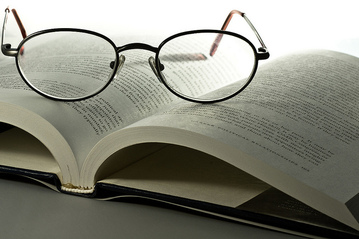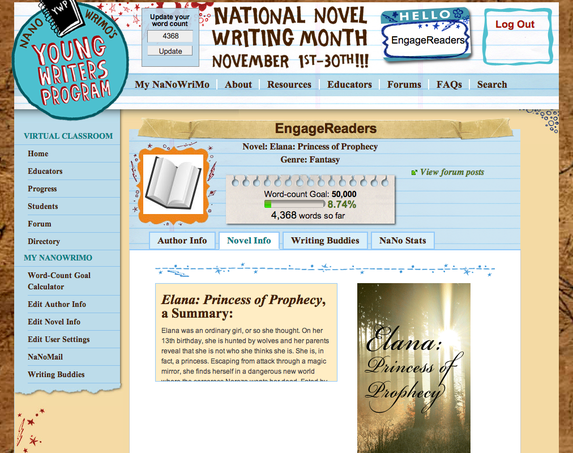
Think of an aspect of your topic that you wouldn’t normally consider as something you think about with your body. Then search for how your body experiences or could potentially experience this aspect of your topic, through movement, imagery, empathy… Once you have your ideas use any creative modality (e.g., video, photo, poem, drawing, etc.) to display the transitional process of thinking with your body.
Once you have embodied your topic post your creation to your workspace and write about 500 words discussing: a) your understanding of the cognitive tool of embodied thinking (approximately 1 sentence), b) why you chose the embodiment you did, and c) how this understanding impacts your topic.
During the reading of Ch. 9 of Sparks of Genius, I connected to the description of the process of developing a new physical skill. When learning something new, we are very conscious of our bodies' actions and movements. Completing a task can be time consuming because we are so focused on doing it in the correct way. As I've mentioned in past posts, I am a knitter and teach children how to knit. This description is very apt and something I stress to my students will become easier as they continue to practice. I learned to knit when I was in fourth grade and remember struggling with the skill at first. I was a tight knitter and had a hard time because I pulled the yarn too tightly when I wrapped it around the needle. This is a beginner's mistake, as we usually are worried about dropping a stitch so we overcompensate. As I continued to practice, I learned to find the "right" tension that made the knitting look even and neat and not too difficult to work. I've progressed in my practice to the point that I don't have to look at my hands to know what to do. If I am doing a simple garter stitch, I can even do it in the dark. My students are amazed to hear that I've taken my knitting to movie theaters and sometimes request me to show them that I can really do this. I dutifully hold out my knitting, close my eyes, turn my head to the side (just to prove I'm not peeking), and continue to knit at the same speed as I normally do. It's a fun thing to show off to them.
I had a discussion with students this week in my knitting club about types of yarn that work well for different projects and I mentioned to them that they will eventually be able to tell what material a yarn is composed of by touch. As an example, I took a couple of skeins they were working with and closed my eyes and rubbed the yarn between my fingers. "This is acrylic," I said to one student. "This is is cotton and this has animal fiber," I mentioned to the others. They asked how I could tell and I told them it had to do with the texture and feel of the yarn.
So what does all this have to do with my subject area? I thought quite a bit about how to embody the topic of genre. My first thought was how to "touch" words and I did a little reading on how visually impaired individuals read using braille. I also thought about sign language. I have two children with special needs and I use some signs with them as part of their communication plan. I was interested to read that there were genres within signing, forms and structures that were as easily recognizable to ASL users as written genres are to those reading print literature.
I then began thinking in another direction and tried to look at the ideas from the reverse perspective. Throughout the course I have looked at genre from the perspective of a reader and tried to develop methods to communicate how a book might fall into a particular category. In thinking about the tool of embodied thinking, I began to look at it from the perspective of a writer. To truly understand how a story fits into a particular genre, it would be interesting to explore the process of creating a story of a particular genre.
I'm probably a little crazy for trying to complete this project, my work for this class, teach full-time, and manage my family. It is definitely out of my comfort zone, but already I am beginning to have an understanding of story development that I don't think I could have any other way.
Last week, my students began thinking about their characters and we discussed that characters truly are what motivate us to read. It's interesting because when you ask a person about a book, you usually say, "What's that book about?" not "Who's that book about?" Plot would seem to be the most important element, but when you start to plan a story, you realize the events can change, but the character is with you throughout the story. If you don't care about the character, who will care about what happens to them?
Yet, plot is important. I found myself with a wispy idea of a story that wouldn't solidify up until about Tuesday. I knew I wanted to write a fantasy and wanted it to be a fairy tale, but was unsure of the details. I imagined writing a retelling of a classic fairy tale, like Cinderella. I also toyed with the idea of writing a sequel to a fairy tale, something that would take place years after the original story, maybe even involving ancestors of the original characters. The problem was that I couldn't find a fairy tale that I wanted to retell or re-envision. I eventually decided I would need to create my own fairy tale.
Below is a rough draft of my first two chapters. There are plot holes, timeline problems, and probably grammar mistakes, but a guiding tenant of NaNoWriMo is to silence our "inner editors" for the month. November is about cranking out the story. Revision can begin in December. This idea gives a certain amount of freedom and ultimately enhances creativity. My story doesn't have to be perfect and I am learning much about the fantasy genre by creating within the form. A story that is fantasy couldn't really happen, but it is my job as a writer to make readers believe it could. I need to help them suspend disbelief and find ways to help them picture the characters and places that are in my imagination.
I feel like I've got a good start, but I know even if I "win" NaNoWriMo and finish my 50,000 words this month, the next few months will be just as busy with revisions.
Elana: Princess of Prophecy - Click to view in Google Docs

 RSS Feed
RSS Feed